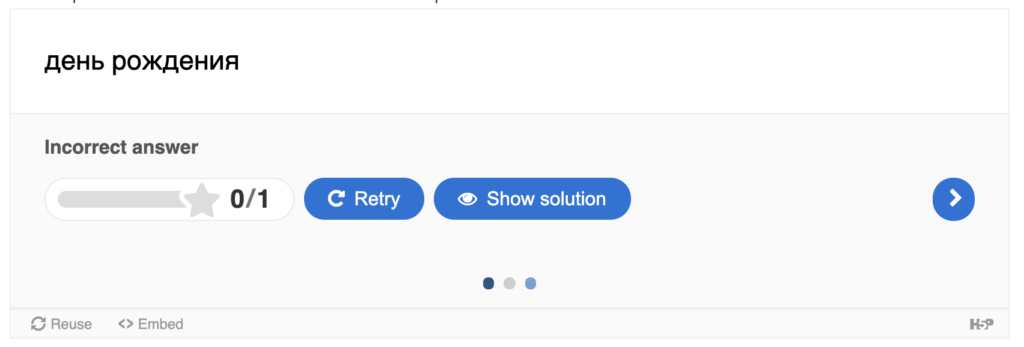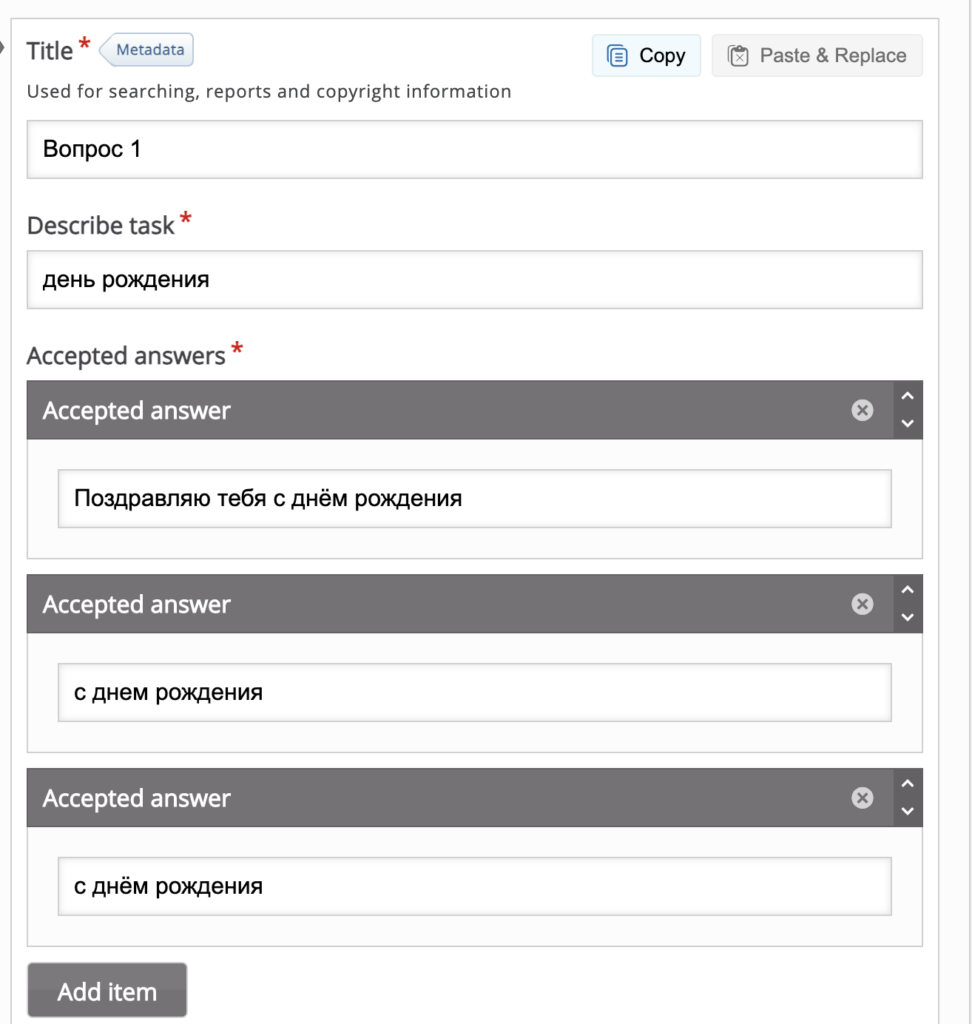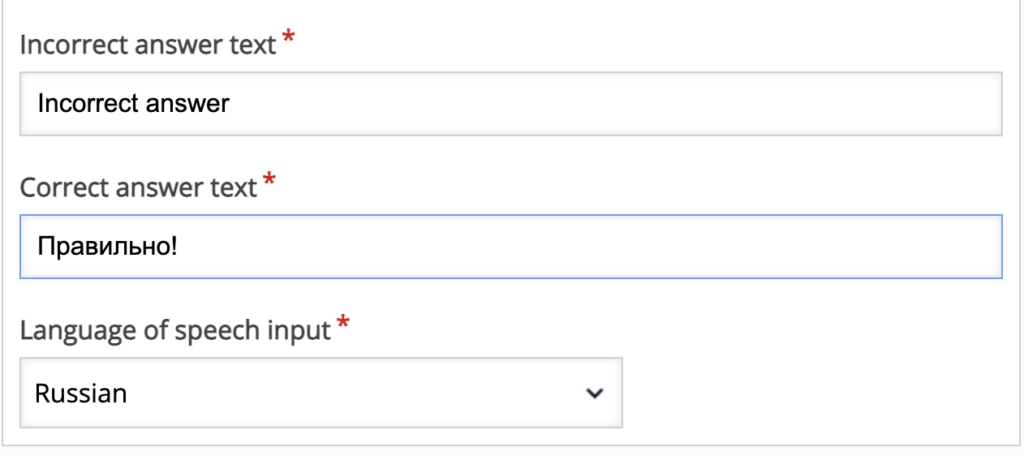
H5P Speak the Words Set for Structured Speaking
By Shannon Donnally Quinn, Michigan State University

DOI: https://www.doi.org/10.69732/GTZU3338
One challenge that we faced when moving instruction online in the wake of COVID-19 was the potential of losing opportunities for students to practice speaking in the target language. H5P’s activity type “Speak the Words Set” can help instructors include more oral production in online or hybrid courses through structured speaking activities.
| Name of Tool | H5P activity type Speak the Words Set |
| URL | https://h5p.org/ – Note that this activity type may not be available in every installation of H5P. |
| Browser | Currently only available in Google Chrome (powered by Google speech recognition technology) |
| Primary purpose of tool | Automatic feedback on speech based on speech recognition |
| Ease of use | Easy, around 120 languages/language varieties available |
H5P’s “Speak the Words Set” uses speech recognition to give feedback to users about words or phrases that they are prompted to say. Students are given prompts requiring them to produce a certain word or phrase.

That utterance is then interpreted by Google speech recognition and compared to text answers defined by the instructor as correct.

If the app judges the phrase to have been said incorrectly, it will give them feedback as well.

An essential part of this feedback is the “Show solution” button, which shows what Google thinks the learner said. This can be valuable information to help students identify morphological errors or to focus the attention of students who tend to leave out syllables or add in extra syllables when they speak.

Students then use the arrow keys to move from one prompt to the next.
There are, of course, limits to what this tool can do, as it cannot handle personalized answers or wide variability in syntax. However, since more and more language courses are becoming hybrid or moving online, this may be an additional way to practice spoken speech even when more work is being done asynchronously. In spring 2020, when my courses were moved suddenly online and some students were experiencing challenges in accessing the course, I moved more of their coursework to the asynchronous format. Some of the exercises that would have been written or might have been activities that led up to more personalized ones then became spoken homework. Moving these structured activities to a “Speak the Words Set” format meant that I then prioritized personalized and open-ended activities in the synchronous class.
Setting up Speak the Words activities
The setup of tasks is relatively simple.
- Choose the correct language (around 120 languages are available);
- Type in the prompts;
- Type in the accepted answers.
You can designate several alternative answers, and you should try to think of as many possible variants as you can to minimize student frustration. I have also found that the app works better if you do not use punctuation in the answers. You can also specify the phrases that you would like to appear as feedback in the target language if you wish.


Student reaction to the tool
Most students reported that they found this tool helpful, with many mentioning that they could get some feedback on their speech without feeling embarrassed in front of classmates or an instructor. This aspect may be especially important for students who have social anxiety or have trouble speaking in front of others. Practicing their utterances asynchronously may allow them to feel prepared for the more personalized interpersonal exchanges that follow in a synchronous class, whether online or face-to-face.
Conclusion
Though this can be a useful tool, it is extremely important to make sure students understand its limitations. Speech recognition has greatly improved in recent years, but it is still far from perfect. These types of activities should certainly not be used in high stakes assessments, but rather in practice situations. If we have our students use this technology, they need to be instructed about how to use it and how to evaluate their results. The application is relatively forgiving when it comes to things like an accent, and it does not do very well at distinguishing between sounds that are close to each other. I found that for certain words or phrases, it would evaluate them as incorrect even when I said them correctly, or evaluate them as correct when I clearly said them incorrectly. Before sharing an activity with students, you should try out the phrases yourself so that you can identify and discard ones that may be problematic. Students need to know that the app’s results are not completely accurate, and should be shown how to access the feedback given through “Show solution”.
Automatic speech recognition, while still not equivalent to a language partner, can still play a role in our strategy to help students continue to practice oral speech. Allowing them to use Speak the Words Set can help them gain independence by helping them to notice their own mistakes with morphology or mispronunciations, reinforce vocabulary in a low-stress environment, and gain confidence in preparing for authentic interpersonal exchanges.
For another alternative for pronunciation practice through speech recognition, see Dan Nickolai’s article iSpraak: Automated Online Pronunciation Feedback.

Thank you for this article. I haven’t started to use this feature yet and whilst I could already see many advantages of using it, I hadn’t yet considered how it may help with building confidence especially for introverted language learners. Thank you.